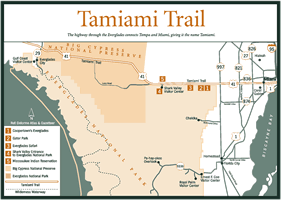
[Fig. 3(2)] If bird-watching is an important part of your visit to South
Florida, you may want to plan a side trip to the Loxahatchee National Wildlife
Refuge. A preserved portion of the historical northern Everglades, combined
with active management of a series of man-made ponds, makes it the perfect
site to add a few species to your checklist.
Located west of Boynton Beach, about 17 miles southwest of West Palm Beach, the refuge was established in 1951, and encompasses one of the conservation areas that were established to help control water flow through the Everglades and throughout Florida. The refuge includes about 145,000 acres of Everglades habitat, including tree islands, sawgrass, wet prairies, and sloughs.
When you arrive, check at the visitor center for recent sightings and pick up a bird list. More than 250 sightings have been compiled by refuge personnel and local birding experts. Many of the same common species of birds found in Everglades National Park can be seen in the refuge, including great blue herons, Anhingas, white ibis, little blue herons, tricolored herons, great egrets, cattle egrets, snowy egrets, and black-crowned night herons.
In the winter, the refuge is home to thousands of migrating waterfowl, which share the area with resident egrets, herons, and ibis. Many of the species regularly come to a series of water impoundments designed to provide native habitats and foods to both migrating and resident birds. Water levels are controlled in the 10 separate impoundments to encourage nesting and feeding of different species. The impoundments are surrounded by dikes that are easy to stroll along while watching for wildlife.
This is one of the areas where the Everglades snail kite is occasionally spotted, although sightings are not very common. Also while walking along the dikes watch for cottonmouth moccasins lying at the water's edge. Mammals you might see include rabbits, otters, and white-tailed deer.
The Cypress Swamp Boardwalk is a 0.4-mile, level, and rail-less boardwalk through a small cypress head. The beautiful, thick vegetation crowded together beneath the cypress canopy is favored habitat for pileated and red-bellied woodpeckers, yellow-billed cuckoos, screech owls, great-horned owls, and a variety of songbirds. During spring and fall migrations, the cypress swamp is a stopover for traveling vireos and warblers.
The swamp floor is covered with a mixture of ferns and a scattering of cypress knees. Cypress knees either help the trees stand up in the wet soil, or help the trees breathe, or both. Among the ferns growing on the forest floor are leather fern, strap fern, and swamp fern. Epiphytes like wild pine and Spanish moss grow in the tree branches overhead.
A 5.5-mile Everglades Canoe Trail loops through a small portion of the refuge and gives you a chance to visit the Everglades habitats up close. Sloughs have water deeper than the surrounding habitats and support plants like spatterdock and water lilies. Wet prairies have short, emergent plants and shallow water levels. Sawgrass grows in solid stands, scattered around with other plants. Tree islands are formed where small plants were able to get a foothold in the exposed peat bottom. They were followed by larger shrubs and trees, which form canopies high overhead. The islands often have a thick border of wax myrtle, common buttonbush (Cephalanthus occidentalis), and cocoplum.
The refuge is surrounded by a large canal. A stroll along the canal bank is a good way to see wildlife. During times of low water, or on cool sunny days, you can see some very big alligators. Give them a wide berth.
There are no picnic or camping facilities in the refuge. State of Florida fresh water fishing regulations and license requirements apply to fishing in the refuge (see Appendix E, page 297).
[Fig. 3(3)] Between Loxahatchee National Wildlife Refuge and Everglades National Park, Sawgrass Recreation Park west of Ft. Lauderdale provides another chance to visit the Everglades. If you don't have a chance to try the airboat rides along Tamiami Trail, this park can be another option.
Sawgrass Recreation Park is located on the edge of one of the Everglades conservation areas. The private operation runs airboat tours into the Everglades habitat where you'll get a close-up view of an alligator in the wild. On a typical ride you might also see boat-tailed grackles, coots, ospreys, great egrets, great blue herons, and common moorhens.
The airboat driver will stop so you can touch a piece of sawgrass. You'll notice how the teeth are curved in one direction. Rubbing the blades in one direction, from the top to bottom, causes a sharp cut, in the other direction, bottom to top, nothing happens.
A reptile exhibit has alligator pens with a 13-foot monster, a box turtle, a saltwater crocodile, and a variety of snakes.
There's also a captive Florida panther on the grounds two to three days a week. An eighteenth century native Seminole Indian village tells the story of the Seminole Indians. A craft stand sells hand-made items.
There are tour guides at each of the attractions. They give short talks and answer questions. Fishing is also allowed in the conservation areas, which are open to the public. State fishing regulations apply.